There are approximately 4,400 Hachimangu shrines in Japan and about 40 in Tokyo alone, and Tomioka Hachimangu is the largest of them all. It has long been known as the ‘Hachiman-sama of Fukagawa’ and has been, now and then, beloved and worshiped.The shrine’s main approach faces Eitai Street , a large street running east-west. On weekends, food stalls line the sides of the approach. Monzen-nakacho, the nearest station, has many okonomiyaki and monja restaurants, and is a popular destination for tourists.
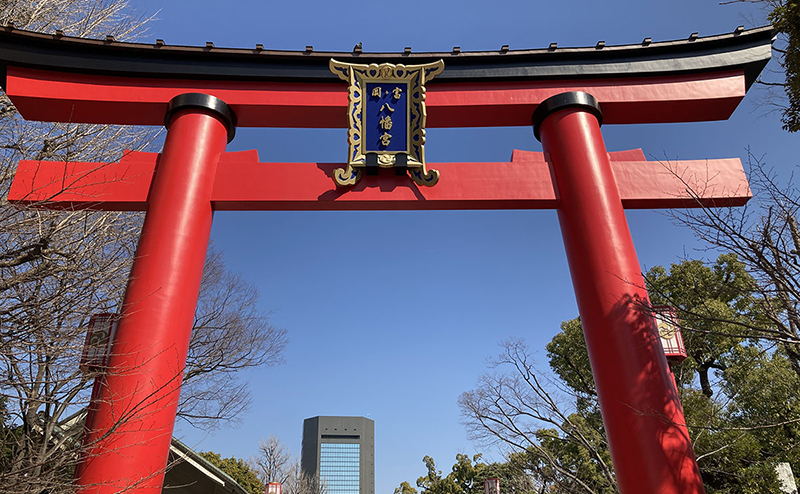
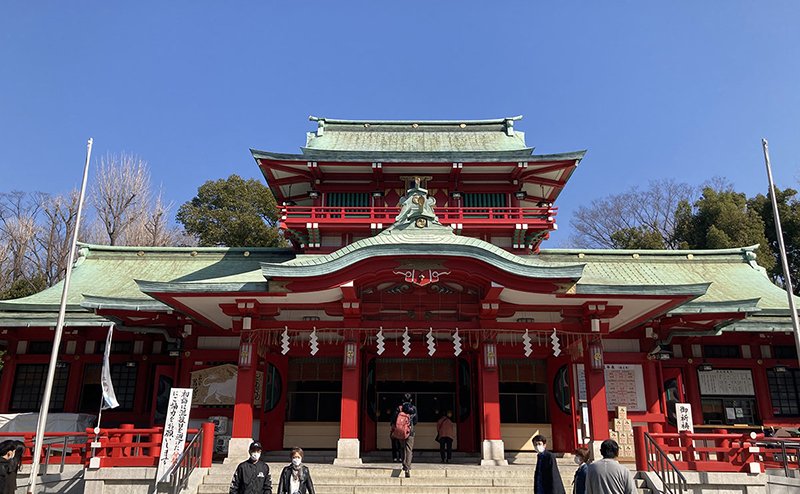
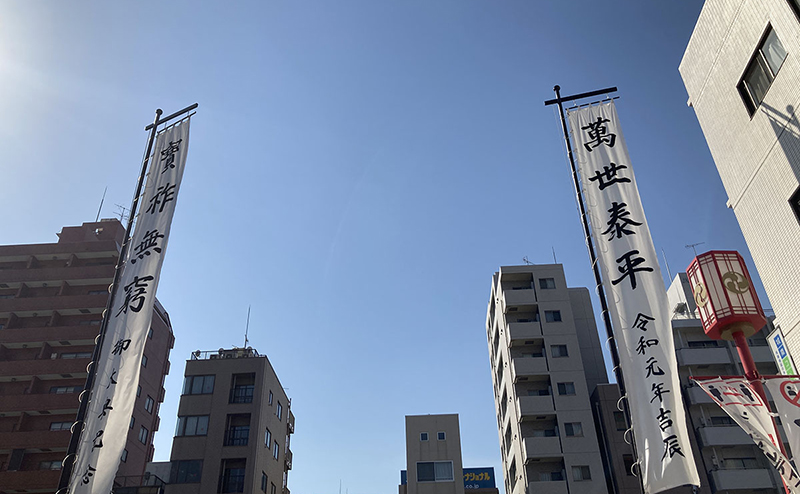
History of Tomioka Hachimangu Shrine
In 1627, the shrine was founded according to an oracle in the present site, which used to be called Eitai Island. The surrounding sandbar area was reclaimed to create an area of over 200,000 square meters for the shrine grounds. In the Edo period, the Tokugawa shogunate, which revered the god Hachiman immensely, generously protected the shrine.
Within the precincts of the shrine, there are 17 ‘massha (undershrines)’ that are entrusted to the main shrine. Various Shinto gods are enshrined here, such as the god of sewing, the god of performing arts, the god of agriculture, and the god of commerce. In front of the shrines, there is an approach with 15 torii gates.
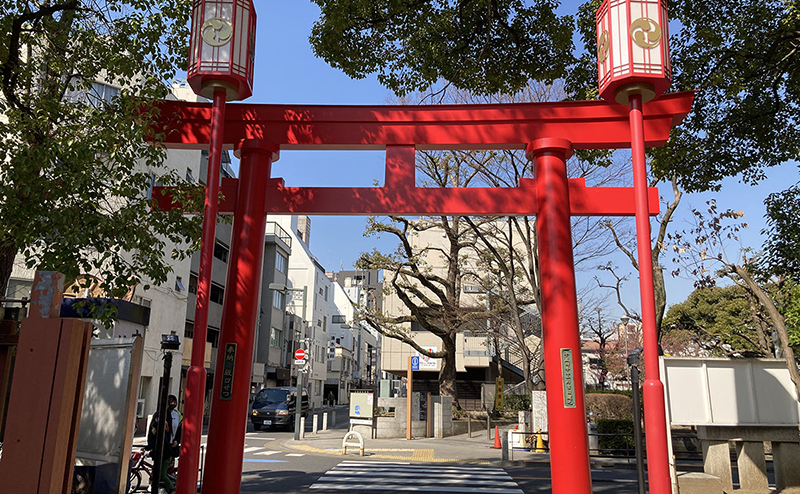
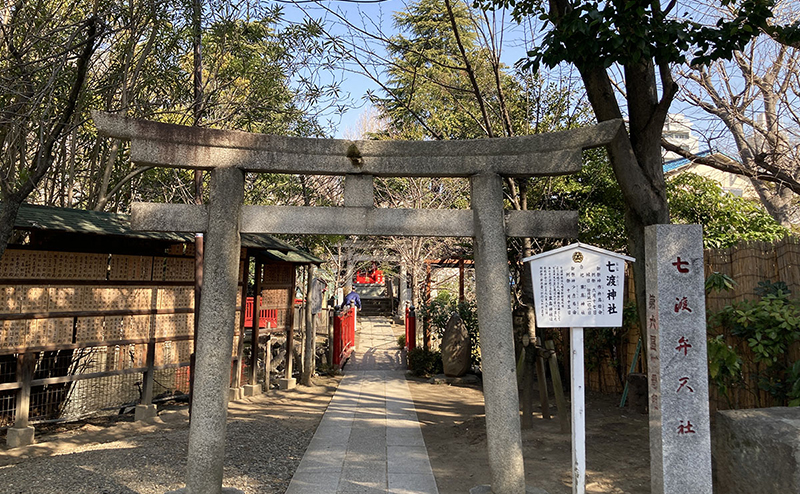
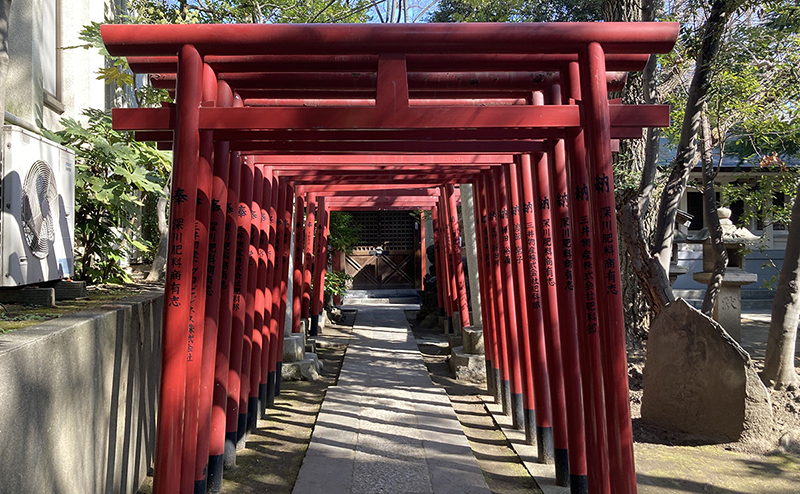
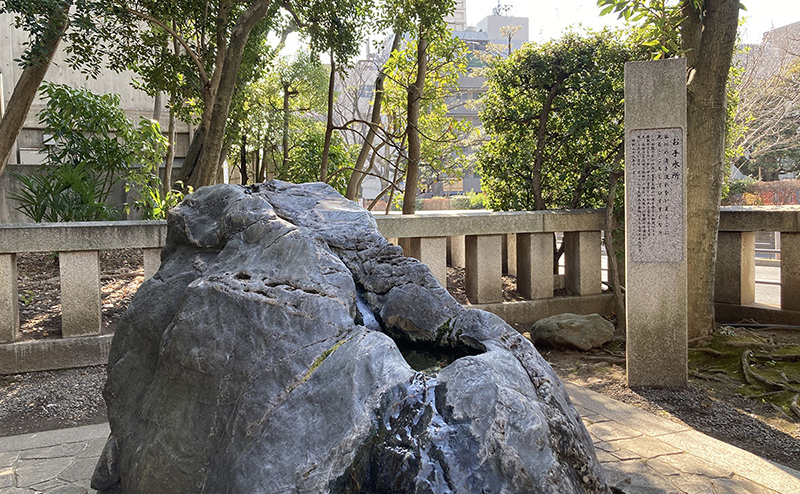
Sights to see of Tomioka Hachimangu Shrine
Sumo
Tomioka Hachimangu is also known as the birthplace of Edo Kanjin Sumo. Kanjin sumo is a sumo show that takes money from spectators. In the beginning, tournaments were held to raise money for the repair of temples and shrines.
In the Edo period, sumo was first practiced in Kyoto and Osaka. It was temporarily banned for ‘disturbing public morals’, but in 1684 the shogunate allowed two tournaments a year, one in spring and one in autumn. Thereafter, the main tournament has been held in the grounds of Tomioka Hachimangu for 100 years.
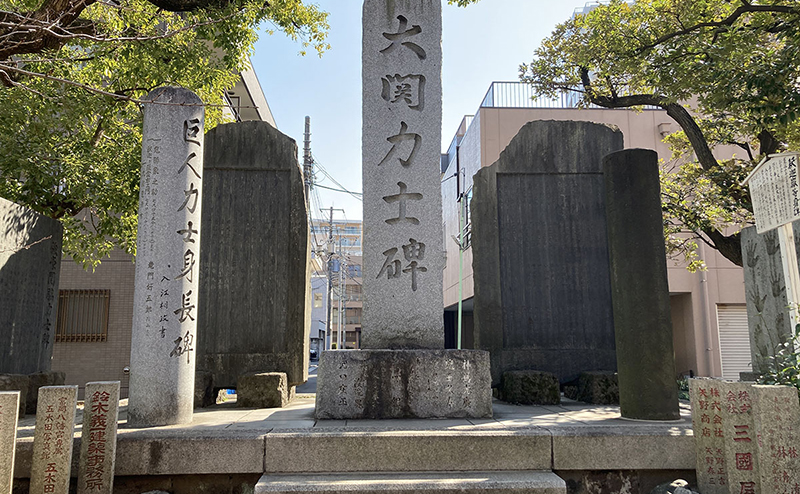
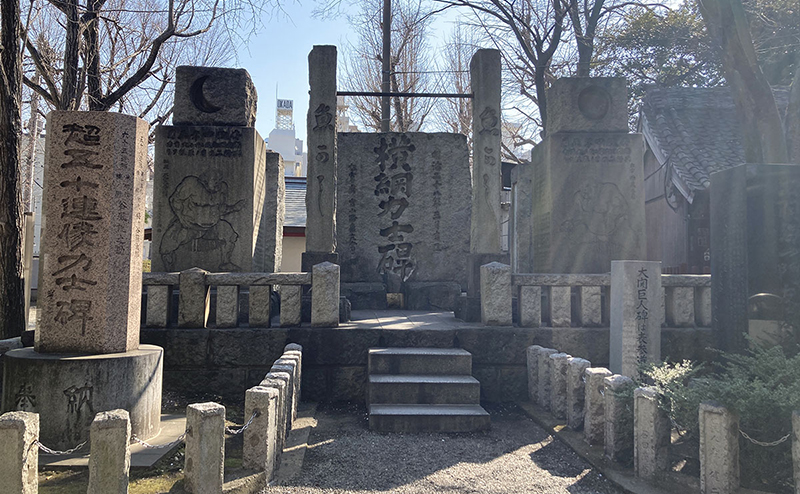
On the grounds of the temple, there are monuments telling the history of sumo, such as a monument for past yokozuna, with their names carved at the back, and a monument with large wrestlers’ handprints and footprints. The Yokozuna Wrestlers Monument is 3.5 meters high, 3 meters wide, and weighs 20 tons, making it an imposing stone monument worthy of honoring yokozuna.
The names of supporters, such as Ito Hirobumi, Yamagata Aritomo, and Okuma Shigenobu are engraved on both sides, indicating that it was built with the support of a wide range of people from various fields. Even today, when a new yokozuna is inaugurated, a dedication ring-entering ceremony is held at Tomioka Hachimangu.
The approach to the main shrine is lined with monuments to ozeki, to giant wrestlers, to strong sekiwake, and a monument of giant wrestlers’ hand and footprints, making it a popular sumo spot for sumo fans.
Inō Tadataka
Just inside the torii gate, there is a statue of Inō Tadataka. Inō Tadataka was a surveyor in the Edo period, and was the first person in Japan to complete a map of Japan by walking around the country and measuring it.
He lived in Fukagawa Kuroe-cho (present-day Monzen-nakacho 1-chome) and always visited Tomioka Hachimangu when he left for his surveying trips. So in 2011, a bronze statue of him was erected at Hachimangu where he often visited.
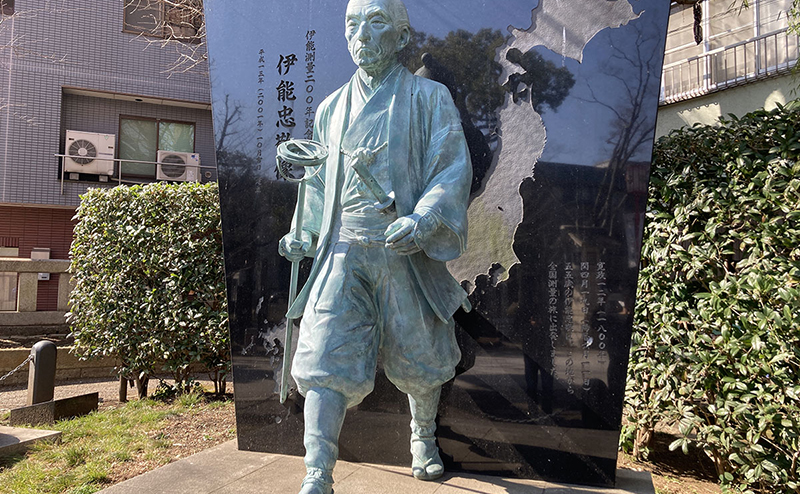
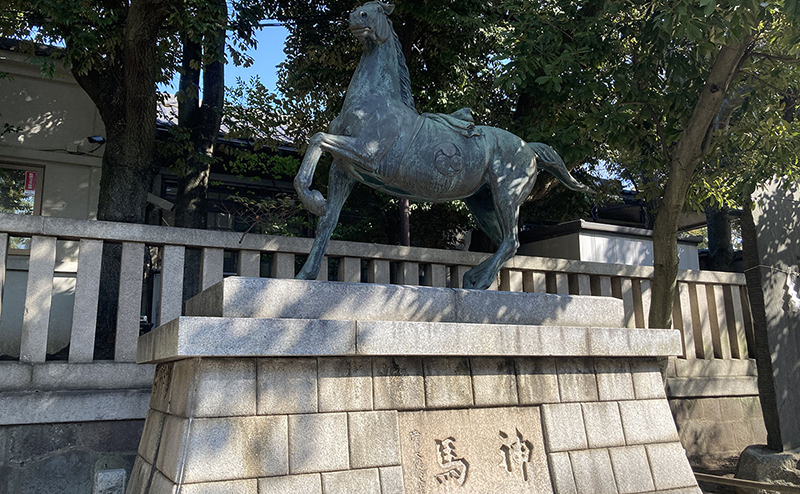

The Largest Golden Mikoshi in Japan
Next to the statue of Inō Tadataka, there is a shinyoko (storehouse for mikoshi), where two mikoshi (portable shrine) are stored. The portable shrines, decorated with gold, silver and diamonds, are used in the Fukagawa Hachiman Festival held every year on August 15. They are the largest golden mikoshi in Japan.
Originally, there were three golden mikoshi dedicated by Kinokuniya Bunzaemon, a wealthy merchant in the Genroku era. However, they were destroyed by fire in the Great Kanto Earthquake. The mikoshi parade was revived in 1991 with the dedication of Japan’s largest golden mikoshi.
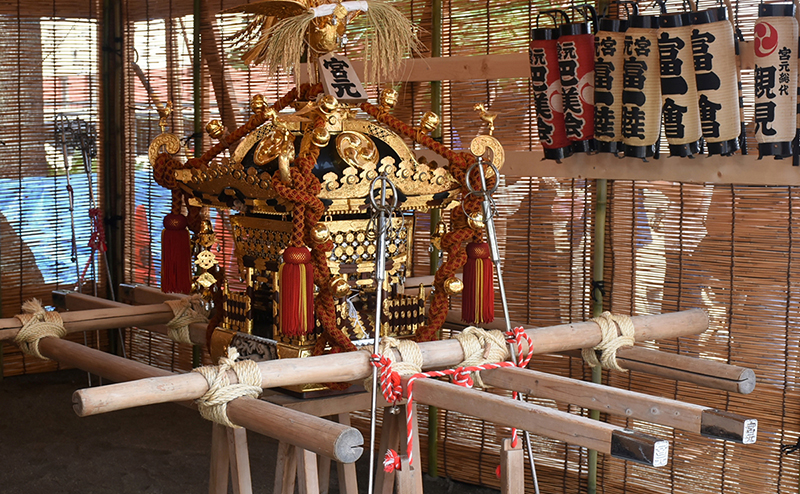
Fukagawa Hachiman Festival
The Fukagawa Hachiman Festival is one of the three largest festivals in Edo, along with the Sanno Festival at Hie Shrine in Akasaka and the Kanda Festival at Kanda Myojin. The main festival where the gohoren (mikoshi with phoenix decoration) of Hachimangu makes procession is held once every three years, and fifty-three mikoshi make a combined procession.
The Fukagawa festival is characterized by the traditional shouts of “Wasshoi, Wasshoi, Wasshoi” and the roadside spectators sprinkling purifying water on the bearers. For this, the festival is also known as ‘Mizukake Matsuri’. The festival is passed down from generation to generation by many people as a way of conveying the essence of Edo.
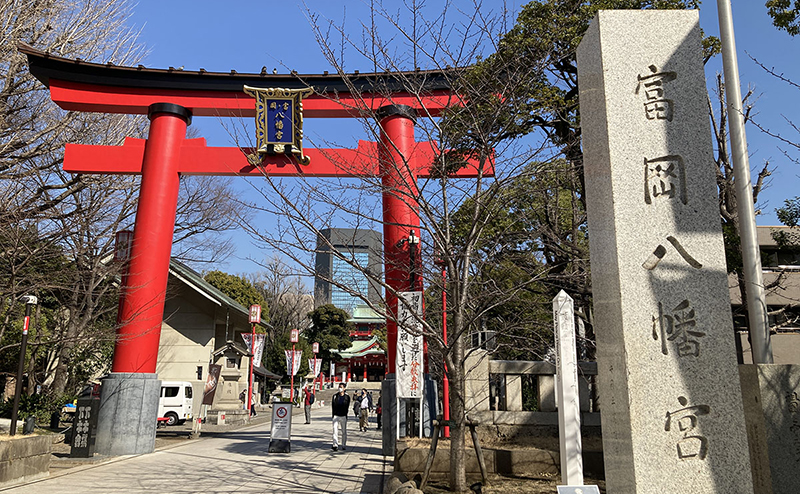
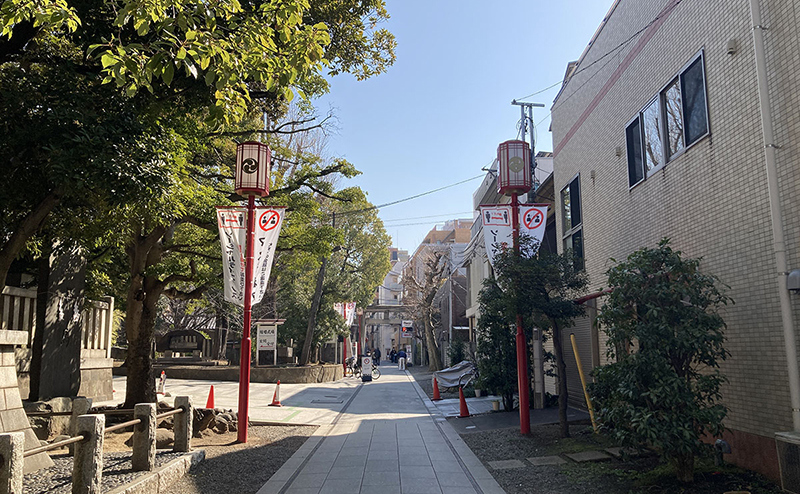
Access to Tomioka Hachimangu
1-20-3 Tomioka, Koto City, Tokyo
TEL : +81-3-3642-1315
Parking around Tomioka Hachimangu
Tomioka Hachimangu Official Website
Official site:http://www.tomiokahachimangu.or.jp/
